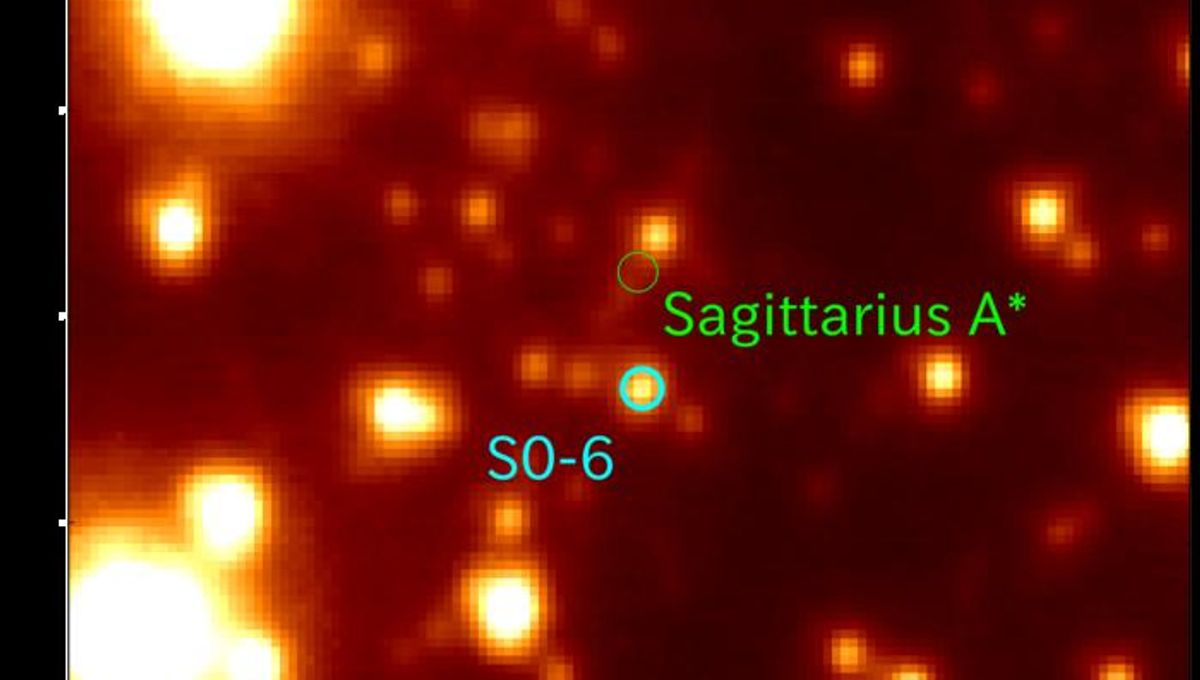
Near the very center of the galaxy, on the outskirts of the supermassive black hole Sagittarius A*, an interloper has been found. The star in question, named S0-6, has a chemical composition that matches small satellite galaxies, rather than the Milky Way itself. Given its age, it’s likely it has been traveling for a very long time.
Powerful forces such as supernova explosions or gravitational close encounters can throw stars out of the galaxy. Some have been seen leaving at great speed. Logically, therefore, we would expect there to also be stars with origins outside the galaxy – for example, in smaller nearby galaxies – to sometimes make their way in. This discovery, however, is the first time one has been found having journeyed almost the entire way to the Milky Way’s core.
It’s a common human story. Someone young and ambitious finds their home village stultifying and decides to seek their fortune in the big smoke, where they are originally rejected for their provincial beginnings. Immense clouds of fusing gas don’t have the same capacity to choose their path, but S0-6’s journey has many similarities. However, where humans leaving their hometown for Hollywood seek to become a star, S0-6 always was one, albeit of relatively modest mass.
Dr Shogo Nishiyama of Miyagi University of Education found S0-6 just in time. After traveling at least 50,000 light-years on a 10 billion-year quest, it is now just 0.04 light years from Sagittarius A* – and we know what happens to stars that get too close to supermassive black holes. Don’t weep too much for S0-6, however. As a quite evolved star that has cooled down and puffed up to giant size, its time would be almost done, even in a safer location.
Rather than coming from one of the surviving small galaxies whose composition it resembles, such as the Small Magellanic Cloud or the Sagittarius dwarf galaxy, Nishiyama and co-authors think S0-6’s galaxy of origin no longer exists. The Milky Way gas consumed many small galaxies on the way to becoming the giant it is today; S0-6’s was probably one of them.
Although S0-6 is the first star from outside the galaxy to be found near Sagittarius A*, it’s quite normal in having reached the area from somewhere else. The tidal forces close to a supermassive black hole are thought to be too strong to allow stars to form there, so all the other stars in the region must have formed further out. In most cases, however, their chemical makeup suggests they arrived from the galactic equivalent of the suburbs – not a whole other city, or village – of stars.
Besides confirming that S0-6 really is of extra-galactic origins, Nishiyama said in a statement the team wishes to learn; “Does it have any companions, or did it travel alone? With further investigation, we hope to unravel the mysteries of stars near the supermassive black hole.”
The study is published open access in Proceedings of the Japan Academy, Series B
Source Link: After 10 Billion Years, A Star From Outside The Milky Way Reached Its Heart